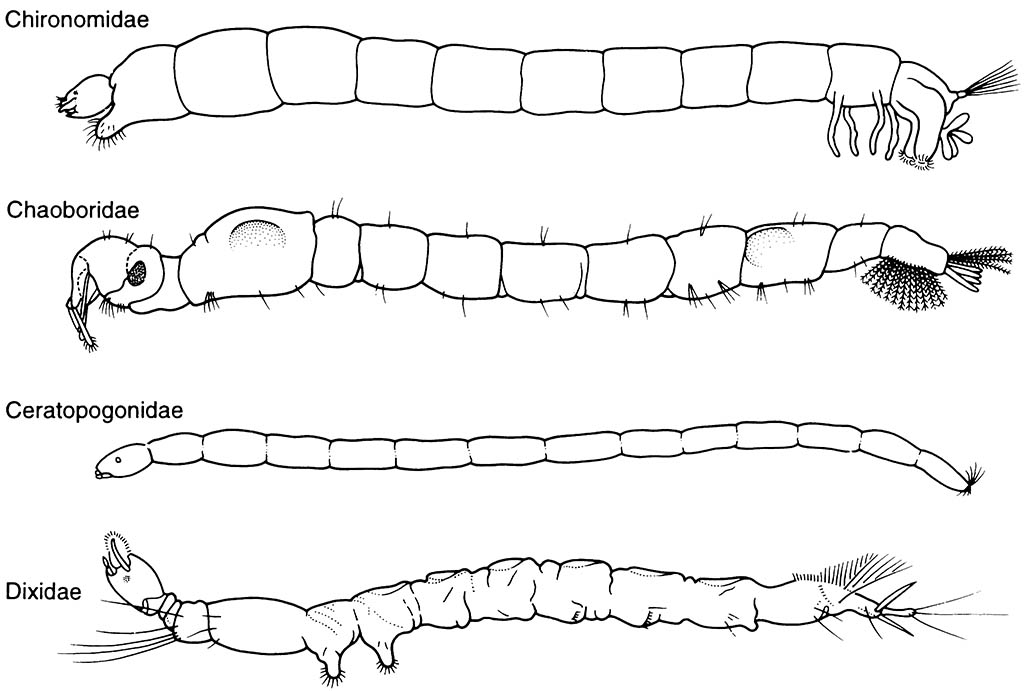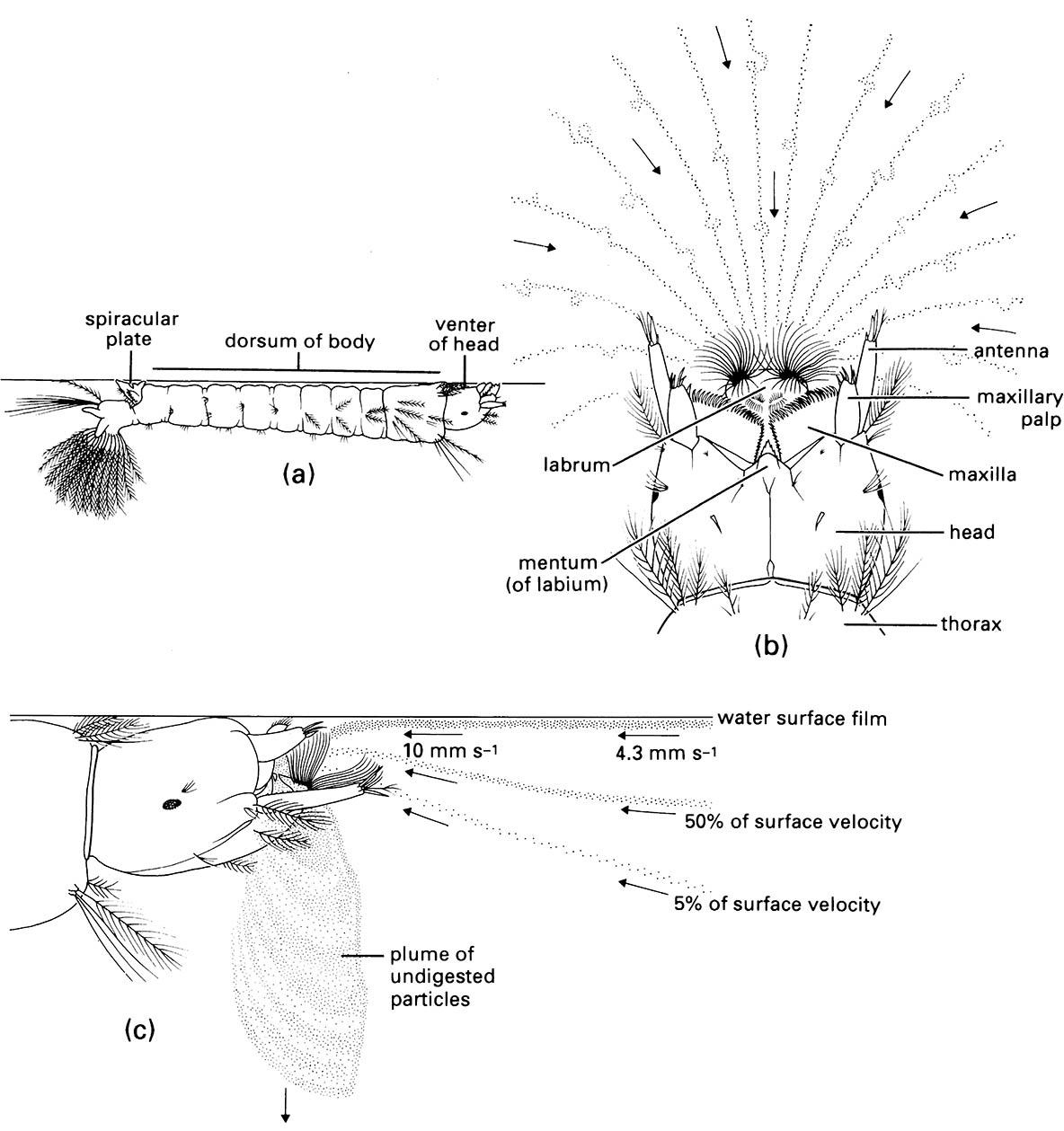Box 10.5. Diptera (true flies)
Amongst the Diptera, aquatic larvae are typical of many Nematocera, with over 10,000 aquatic species in several families, including the speciose Chironomidae (non-biting midges), Ceratopogonidae (biting midges), Culicidae (mosquitoes; Fig. 10.2), and Simuliidae (black flies) (see vignette for this chapter). Dipterans are holometabolous, and the adults are terrestrial and aerial (diagnosed in Box 15.5). The larvae are commonly vermiform (as illustrated here for the third-instar larvae of (from top to bottom) Chironomus, Chaoborus, a ceratopogonid, and Dixa, after Lane & Crosskey 1993), diagnostically with unsegmented prolegs, variably distributed on the body. Primitively the larvae have a sclerotized head and horizontally operating mandibles, whereas in more derived groups the head is progressively reduced, ultimately (in the maggot) with the head and mouthparts atrophied to a cephalopharyngeal skeleton. The larval tracheal system is open (amphi- or meta-, rarely propneustic) or closed, with cuticular gaseous exchange through spiracular gills or a terminal, elongate respiratory siphon with a spiracular connection to the atmosphere. There are usually three or four (in black flies up to 10) larval instars (Fig. 6.1). Pupation predominantly occurs underwater: the pupa is non-mandibulate, with appendages fused to the body; a puparium is formed in derived groups (few of which are aquatic) from the tanned retained third-instar larval cuticle. Emergence at the water surface may involve use of the cast exuviae as a platform (Chironomidae and Culicidae), or through the adult rising to the surface in a bubble of air secreted within the pupa (Simuliidae).
Development time varies from 10 days to over one year, with many multivoltine species; adults may be ephemeral to long-lived. At least some dipteran species occur in virtually every aquatic habitat, from the marine coast, salt lagoons, and sulfurous springs to fresh and stagnant waterbodies, and from temporary containers to rivers and lakes. Temperatures tolerated range from 0°C for some species up to 55°C for a few species that inhabit thermal pools (section 6.6.2). The environmental tolerance to pollution shown by certain taxa is of value in biological indication of water quality.
The larvae show diverse feeding habits, ranging from filter feeding (as shown in Fig. 2.16 and the vignette of this chapter), through algal grazing and saprophagy to micropredation.
Phylogenetic relations are discussed in section 7.4.2 and depicted in Fig. 7.2.


(a) adult emerging from its pupal exuviae at the water surface; (b) adult female ovipositing, with her eggs adhering together as a floating raft; (c) larvae obtaining oxygen at the wa ter surface via their siphons; (d) pupa suspended from the water meniscus, with its respiratory horn in contact with the atmosphere. (After Clements 1992)


(a) The larva floating just below the water surface, with head rotated through 180° relative to its body (which is dorsum-up so that the spiracular plate near the abdominal apex is in direct contact with the air). (b) Viewed from above showing the venter of the he ad and the feeding current generated by setal brushes on the labrum (direction of water movement and paths taken by surface particles are indicated by arrows and dotted lines, respectively). (c) Lateral view showing the particle-rich water being drawn into the preoral cavity between the mandibles and maxillae and its downward expulsion as the outward current. ((b, c) After Merritt et al. 1992)

Broken lines indicate uncertain relationships. Thysanura sensu lato refers to Thysanura in the broad sense. (Data from several sources)



